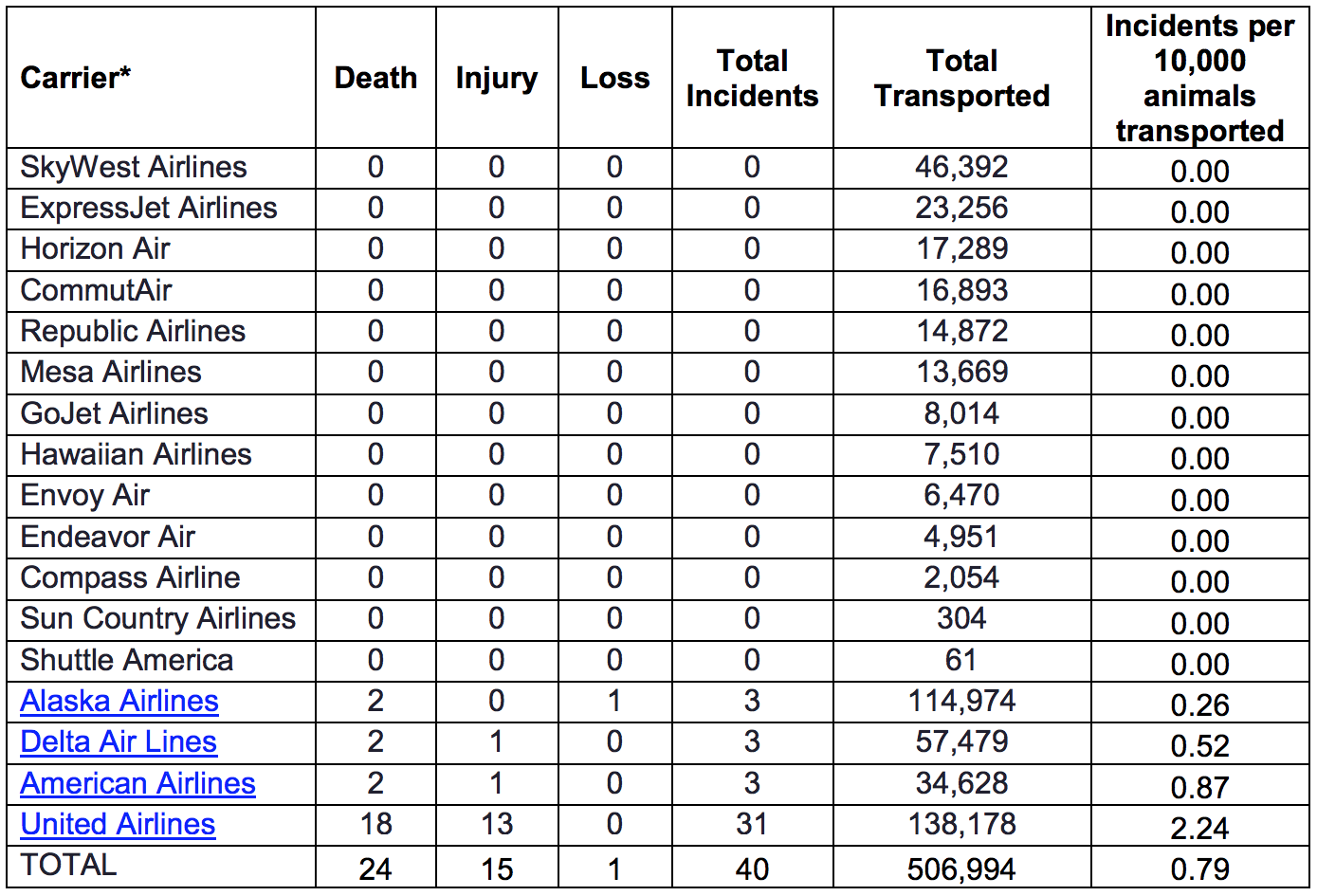It's difficult to imagine what life must be like for people who work in public relations at United Airlines. If the crew isn't dragging a medical doctor off of a plane or killing a giant bunny, they are suffocating a puppy in the overhead compartment.
Just how dangerous is it for a pet to fly on an airline? Not very. But it should be kept in mind that transporting animals can be trickier than transporting people. Rabbits, for instance, can get so scared that they literally die of fear. Unfamiliar settings can greatly stress animals.
The U.S. Department of Transportation keeps statistics on the number of pets that are injured, lost, or killed by airlines. One report (PDF, page 58) provides the following data for 2017. (Note that not all airlines transport pets, such as Southwest Airlines. The airlines in the following table all do transport animals.)

There are a few points worth making.
First, more than 2/3 of animals are transported on just four airlines: Alaska, Delta, American, and United. Second, United was responsible for transporting a plurality (27%) of all animals in 2017, so we would expect -- from sheer volume alone -- for more pets to die on United flights. So, the question is, "Do a statistically disproportionate number of animals die on United?" In 2017, sadly, the answer is yes*.
But animals fared better, albeit only slightly, on United in 2016. (See PDF, page 54.) That year, Hawaiian Airlines claimed the mantle of "deadliest airline for animals."
Still, United has ranked poorly the past two years in terms of animal safety. One would hope that they would treat animals better than they treat guitars.
*Note: To answer this question, we performed a chi-square test in R using the code: chisq.test(matrix(c(6, 368810, 18, 138160),2,2), correct=F). The p-value was highly significant.




